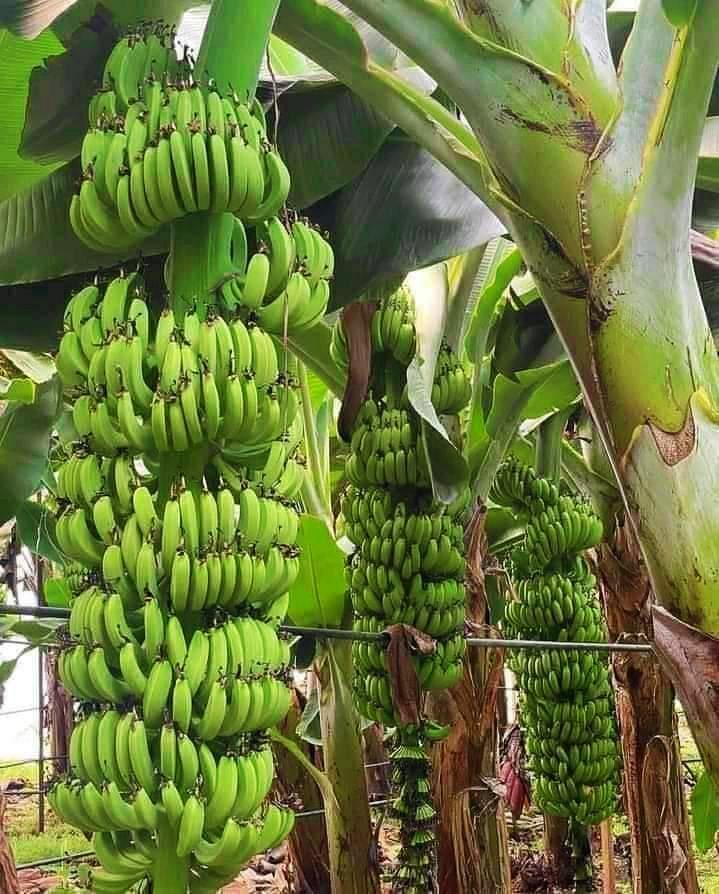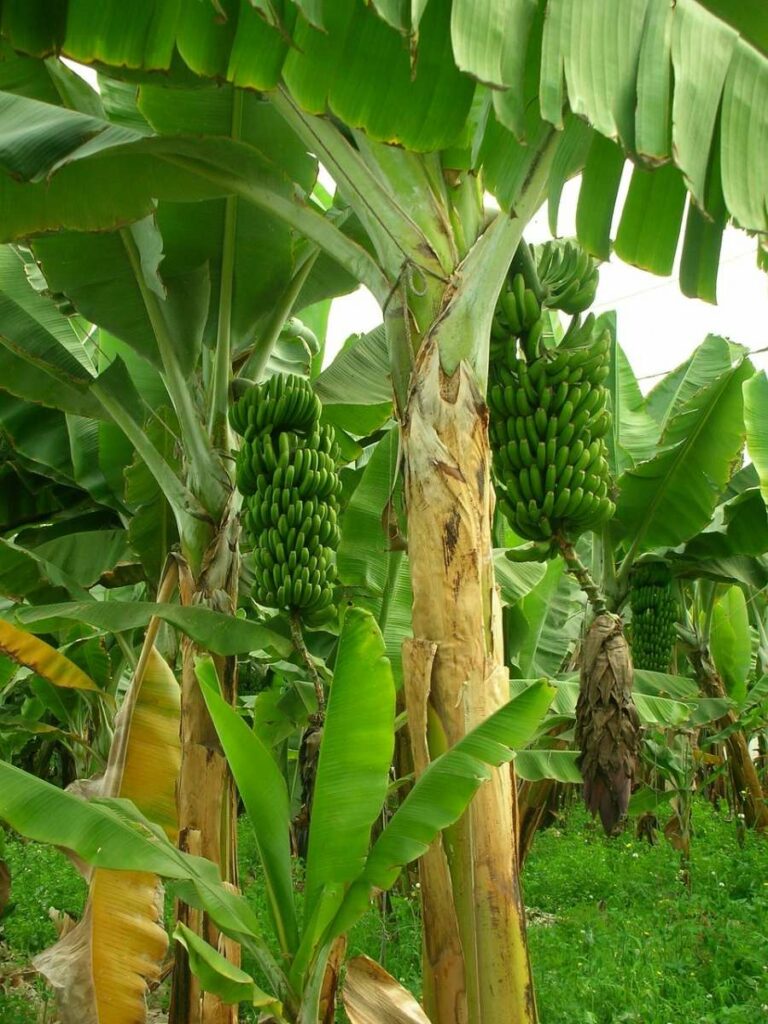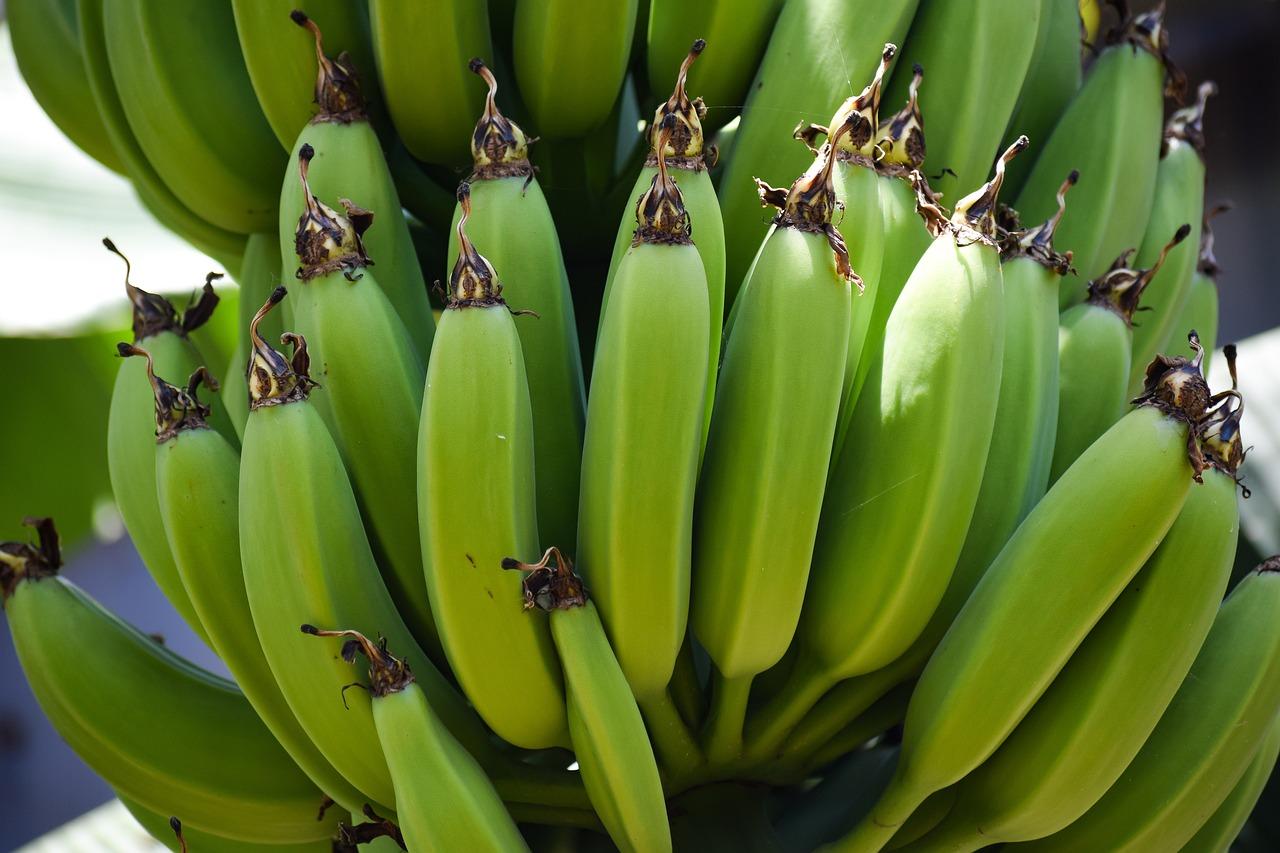Banana plants, with their tall and majestic appearance, often deceive people into believing that they are trees. However, these tropical wonders are not woody plants at all. In fact, they belong to the family Musaceae, which is closely related to the ginger family or Zingiberaceae. The truth is that bananas are large herbaceous plants, exhibiting unique characteristics that set them apart from traditional trees.

While trees possess a sturdy, woody structure that supports their growth, bananas rely on a different mechanism. The so-called “trunk” of a banana plant is actually a pseudostem or false stem, which can grow up to 7.6 meters (25 feet) tall. Composed of tightly packed leaf sheaths, the pseudostem creates a robust and upright framework for the plant. The overlapping layers of these fibrous leaf sheaths give the illusion of a tree trunk, but they lack the rigidity and density of true wood. Instead, they provide essential support to the plant as it grows.
Beneath the surface, an underground rhizome serves as the true stem of the banana plant. The rhizome is also called a corm, which is a swollen stem base that stores food for the plant. From this hidden stem, the pseudostem emerges, extending upwards and producing the large, vibrant leaves that are characteristic of bananas. This unique growth pattern distinguishes bananas as herbaceous plants, thriving in tropical regions where their pseudostems and lush foliage contribute to their distinctive allure.
The confusion surrounding bananas doesn’t end with their stem structure. Even their fruity offerings, commonly referred to as “bananas,” challenge botanical expectations. Technically speaking, bananas are classified as berries. Yes, you read that right—berries! Botanically, berries are defined as fleshy fruits that develop from a single ovary, typically containing multiple seeds. In line with this definition, bananas fit the bill perfectly.

Banana plants possess elongated, fleshy fruits that emerge from the flowering plant. Although their seeds are small and typically located at the center of the fruit, many cultivated varieties are seedless because they are parthenocarpic, meaning they develop without fertilization, further adding to the uniqueness of these berries. So, while we often refer to the fruit as a “banana,” it’s important to recognize its true botanical identity as a berry. Furthermore, the banana plant is monocarpic, meaning it produces fruit only once and it dies.
In summary, despite their striking resemblance to trees, bananas are, in fact, large herbaceous plants. Their false stem or pseudostem, composed of overlapping fibrous leaf sheaths, provides the necessary support for their growth. As for their fruit, bananas are properly classified as berries due to their elongated, fleshy nature and development from a single ovary. So, the next time you savor a delicious banana, you can appreciate the wonders of nature’s diversity, where appearances can be deceiving, but the botanical facts remain fascinating.

